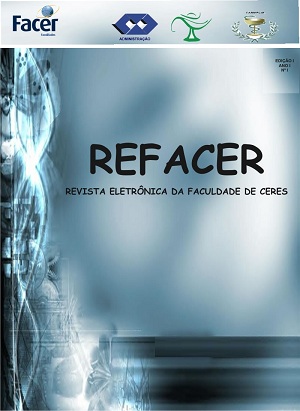EPIDEMIOLOGICAL ANALYSIS OF DENGUE'S INCIDENCE ON CERES-GO COUNTY BETWEEN 2012 AND 2015
DOI:
https://doi.org/10.36607/refacer.v5i2.3362Palavras-chave:
Aedes aegypti, serogroup, epidemics.Resumo
Dengue is an infectious disease caused by a virus Flaviirus genus, transmitted by a vector, the Aedes aegypti. The aim of this study was promote an epidemiological study to identify the incidence of dengue cases reported in the city of Ceres, Goiás. Study was conducted epidemiological, descriptive, ecological type, cross-sectional, quantitative, accomplished by the data collection of the number of reported and confirmed cases of dengue, in the 2012 period to 2015, provided by municipal surveillance in the city of Ceres, Goiás, and the site of the Goiás State Department of Health. Between 2012 to 2015 were reported 4556 dengue cases in the municipality of Ceres, and of these, 45.96% were confirmed by serological tests. Of the total cases reported during this period (n = 4.566), 50.53% (2.290) are the only cases reported in 2015. The incidence rate of the disease in 2015, in Ceres, was 11.051 cases / 100.000 inhabitants, values surpass the previous years (2012-2014). This result demonstrates the high burden of disease in the population of this municipality in 2015. The data also suggest the addition of a new serotype in the region. This increase of the risk of dengue hemorrhagic fever, which characterized as a complication of classic disease, however, data for cases of dengue hemorrhagic fever were not available. There was a considerable increase in the number of dengue cases in 2015 compared to previous years, 2012 to 2014. This growth suggests that serological studies focusing on serotypes detection should be conduct on region.
KEY WORDS: Aedes aegypti; serogroup; epidemics.

